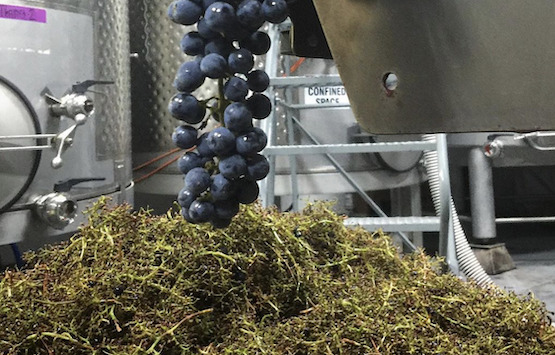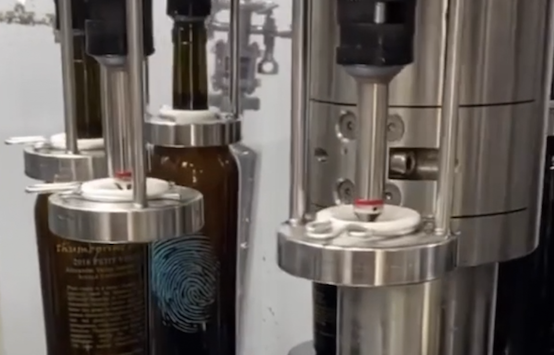
OUR PROCESS
THE ART OF WINEMAKINGMany factors contribute to the characteristics we present in each bottle — the subtle changes in weather, time on the vine, style of fermentation, age and type of the barrels, blending . . . there are so many variable.
To explore these differences yourself, consider purchasing a few bottles of our Library Wines.
Nevertheless, the winemaking process, dating back over 6,000 years, holds a romantic appeal — a merging of art and science. The following chart outlines the very basics of the process.
If you prefer to watch the process of winemaking, a series of short video clips can be found here.
Winemaking Steps
To view the flowchart on your mobile device, please use landscape mode.

HARVESTING
Gathering Grapes
Our grapes are sourced from local growers throughout Sonoma County. We partner with family-owned grape growers in Dry Creek Valley, Alexander Valley, Russian River Valley, and Knights Valley to select the highest quality grape for each varietal.

SORTING & DESTEMMING
Destemming Grape Clusters
At each step in our winemaking process, we strive to minimize our environmental impact. We turn our discarded stems into compost. After carefully removing the stems - destemming - the grapes are gently added to a fermentation tank.

CRUSHING
Releasing the Juice
Red wine grapes are destemmed and fermented with their skins to help develop the color of the wine. After destemming grapes for our white wines, we move to pressing (before fermentation).

FERMENTATION
Turning Juice into Wine
Alcohol and carbon dioxide are produced from the yeast feeding on the sugars of grapes. Here we have a peek inside the barrel of our chardonnay during fermentation.

PRESSING
Straining the Skin
After fermentation, red wine skins are pressed, settled and barreled down before aging. The extended contact with the grape skins is part of what provides red wine its deep, lovely color.

AGING
BARREL AGING
As the wines age, barrels instill subtle flavor in a protective environment. Different types of oak barrels provide different qualities to each wine. thumbprint wines are typically aged 24-36 months in an array of new and once-filled French and American oak barrels.

BOTTLING
Bottling & Packaging
Bottling is the last chance to mitigate last-second issues. Having our own bottling line allows us to protect the winemaking process from grape to bottle and assures total control of our high-quality wines.

SHIPPING
Shipping & Selling
Delivering our artisan wines for your enjoyment is the best part of the process! Visit our Tasting Lounge to sample thumbprints' wines, or join our Wine Club to receive quarterly shipments of your favorites. Prefer to try a bottle before committing to a long-term relationship? We get it — and we're confident this won't be a one-night stand. Shop online to taste for yourself!
PREFER TO WATCH THE BEHIND THE SCENES ACTION?
SHENANIGANS
THE MAGIC OF TIME
As the wines age, barrels instill subtle flavor in a protective environment. Different types of oak barrels provide different qualities to each wine. thumbprint wines are typically aged 24-36 months in an array of new and once-filled French and American oak barrels.
Rather than show you a video clip of wine aging in closed barrels (which has all the excitement of watching paint dry), check out Scott Lindstrom-Dake, thumbprint Founder and winemaker, as he defies the aging process.


